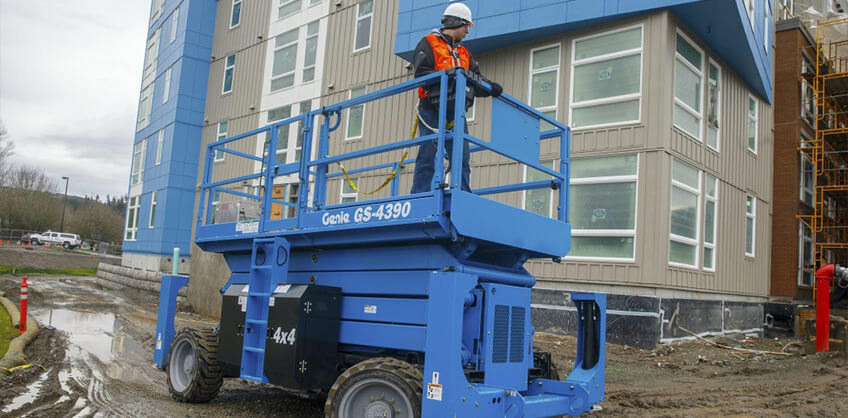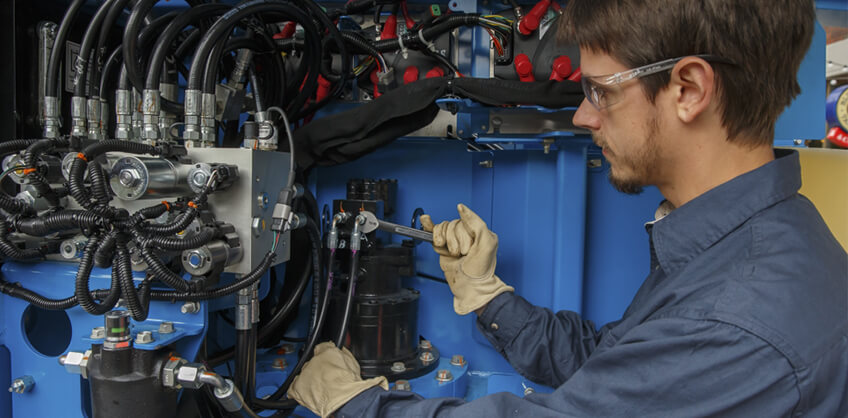What Is a MEWP (Mobile Elevated Work Platform)?
by Tom Meluskey - Product Trainer On Dec 26, 2019, 03:00 AM
Subscribe To Aerial Pros
Filter by tags
It pays to be an expert in the equipment industry, so be familiar with common MEWP terms to avoid expensive mistakes and “playing telephone” with industry jargon. Whether you’re new to ordering jobsite equipment or new at a rental store, knowing your products and consistently providing the best product match for applications will build your credibility.
Common Types of Mobile Elevating Work Platforms
MEWPs themselves have many generic and interchangeable nicknames, such as aerials, aerial work platforms, access equipment, boom lifts or a generic “Genie® lift.” MEWPs are also sometimes just referred to as booms or scissors. Understanding the differences in the type of MEWPs available on the market will help you select the right machine to meet your jobsite needs.
- Telescopic booms, with boom sections that extend telescopically, are described as S-booms, stick booms, straight booms or even cherry pickers: a term that's often applied to both telescopic and articulating booms.
- Articulating booms, with multiple boom sections that hinge, or “articulate,” are known as Z-booms, Zs, knuckle booms, up-and-over booms or zed booms.
- Scissor lifts, which get their name from their stacked lifting mechanism of crossed tubes that work in a scissor-like fashion, can also be called vertical lifts, self-propelled platforms or simply slabs.
Machine Platform Height vs. Machine Work Height
It’s important to know the difference between these two terms so you don’t recommend a machine that falls short of the operator’s goal. The machine’s maximum platform height is the highest that the platform can
be raised. Its maximum work height is about six feet higher than the platform height: It’s the area that people of average height can reach when standing on the platform. Similarly, when comparing restricted and unrestricted
platform capacities, only the latter indicates the total rated platform load limit for a machine’s maximum reach.-terms.jpg?sfvrsn=b6de78bf_16)
Reach itself broadly means how far the maneuverable arm of a MEWP lift, and the work platform (or “basket”) on the end, can extend. This commonly refers to a boom lift’s outreach, also known as horizontal reach maximum. This should not be confused (or combined) with the additional up-and-over performance capability of articulating boom lifts, which have joints in their extension to give them more flexibility to navigate obstacles.
Genie Mobile Elevated Work Platform: Reference Guide
For a Genie MEWP, the model names act as a quick reference guide once understood:
- The first number in a model name is always the vertical reach, meaning the maximum platform height in feet vertically. Genie telescopic boom model names that end with a “5” have a 5-foot jib, such as the Genie S® -85* boom.
- For scissor lifts, the first two numbers indicate the platform height as they do in booms, but the second two numbers indicate the wheel width — the machine’s base at the wheels, not the chassis or the platform (e.g., Genie GS™-1932 scissor lift offering 19 ft of vertical height at 32 inches wide).
*This addition in the nomenclature does not apply to Genie Z booms.
For self-propelled lifts, gradeability is another important criteria for machine selection. This refers to the ability of the machine to drive up a grade or slope (usually expressed as a percentage), not its ability to extend while up that slope. In addition, gradeability can contribute to a machines terrainability, meaning its ability to negotiate terrain, such as rough terrain (RT) of an unimproved construction site.
However, don’t take a machines model description on face value. Always dig deeper to ensure that its performance will meet the operator’s needs. For example, a rough terrain (RT) designation can mean multiple levels of terrainability. Some only provide the addition of lug tread tires. Others feature packages that include oscillating axles, more powerful gasoline/LPG or diesel engines and four-wheel drive.
Meanwhile, many so-called slab scissor lifts can be used on surfaces other than concrete and some “vertical mast lifts” also offer limited outreach.
Open-ended questions help establish the specifics about the work to be done and the jobsite characteristics or constraints. This helps narrow the field of potential equipment and combat the pitfalls of jargon while you learn the ropes. Always refer to the Operator’s Manual of each unit prior to using a new model.
Genie also provides online operator training classes — Genie Lift Pro™ Training — if you’re serious about expanding your working knowledge of MEWP applications and terminology. For more information, visit our Training and Support page.
Related Posts

Tire and Steering Options for MEWPs
In order for your customers to get the maximum performance out of a mobile elevating work platform (MEWP), it is important that you consider what type of tire or track is best suited for their worksite environment and needs.
Continue Reading
-terms.jpg?sfvrsn=bb8c032e_21)
A Glossary of Common Mobile Elevating Work Platform (MEWP) Terms
Safety is always job one on aerial worksites.
Continue Reading

How Machine Data Influences MEWP Maintenance and Service
When looking at a machine’s service and repair from that perspective, downtime costs a rental business big time.
Continue Reading


-terms.jpg?sfvrsn=899e2a7e_25)